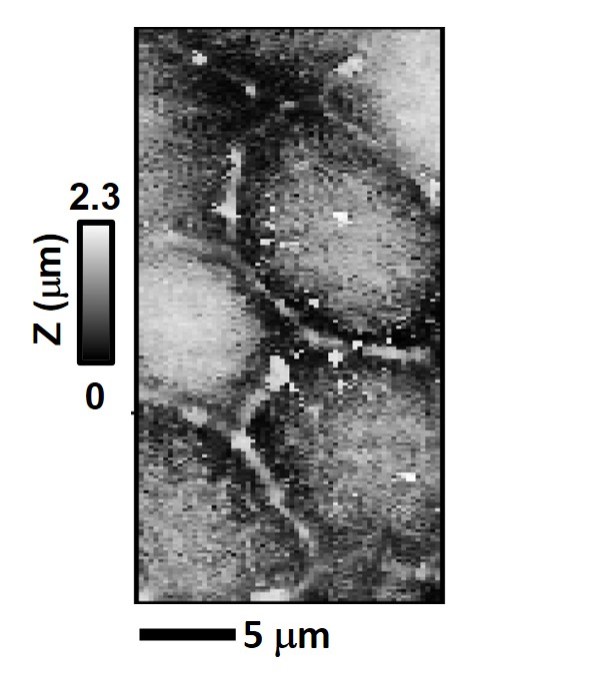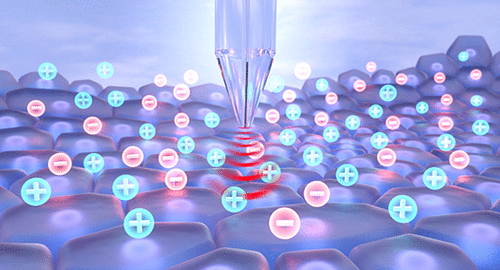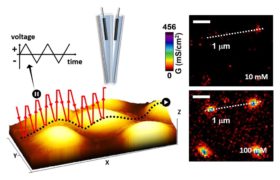
Potentiometric-Scanning Ion Conductance Microscopy (P-SICM) is a rising sub-class of scanning ion conductance microscopy (SICM) that allows for the simultaneous collection of topography and local apparent conductance. In the Bakergrp, this technique began with past group members such as, Chiao-Chen who started by making single-point measurements (Chen, C. C.; Zhou, Y.; Morris, C. A.; Hou, J.; Baker, L. A., Anal. Chem., 2013, 85, 3621-3628). Lushan who then took over and automatized the single-point measurements for imaging and collecting topographical and local apparent conductance maps (Zhou, L.; Gong, Y.; Hou, J.; Baker, L. A., Anal. Chem., 2017, 89,13603-13609). Lastly, Kaixiang who automatized the data analysis through computer vision code within the python coding language (Huang, K; Zhou, L.; Alanis, K.; Hou, J.; Baker, L. A., Chem. Sci., 2020, 11, 1307-1315).
P-SICM, unlike other scanning probe microscopy techniques, is a relatively non-invasive technique that allows for advantageous probing of living cells without physically contacting the sample. Allowing to probe individual parts of a cell monolayer such as, the cell body and the cell monolayer’s bicellular and tricellular tight junctions. This separates P-SICM from other techniques such as TEER measurements that cannot distinguish between the individual parts of a cell monolayer.


Moreover, the applications of this technique can be further applied to more complex systems, like that of a model blood-brain barrier (BBB). Where this has been done in the past with Kaixiang’s work with a model BBB under hyperosmolality conditions to further the study of osmotherapy side-effects (Huang, K; Zhou, L.; Alanis, K.; Hou, J.; Baker, L. A., Chem. Sci., 2020, 11, 1307-1315) and with making a co-culture system that accurately models a BBB by having both epithelial cells and astrocytes within a sample that aid in making a more biologically accurate model (Huang, K.; Castiaux, A. D.; Podicheti, R.; Rusch, D. B.; Martin, R. S.; Baker, L. A., small methods, 2021, 5, 2100592) that may be further studied with P-SICM and other techniques in order to better understand the link between neurodegenerative diseases that are associated with the breakdown of the BBB.




